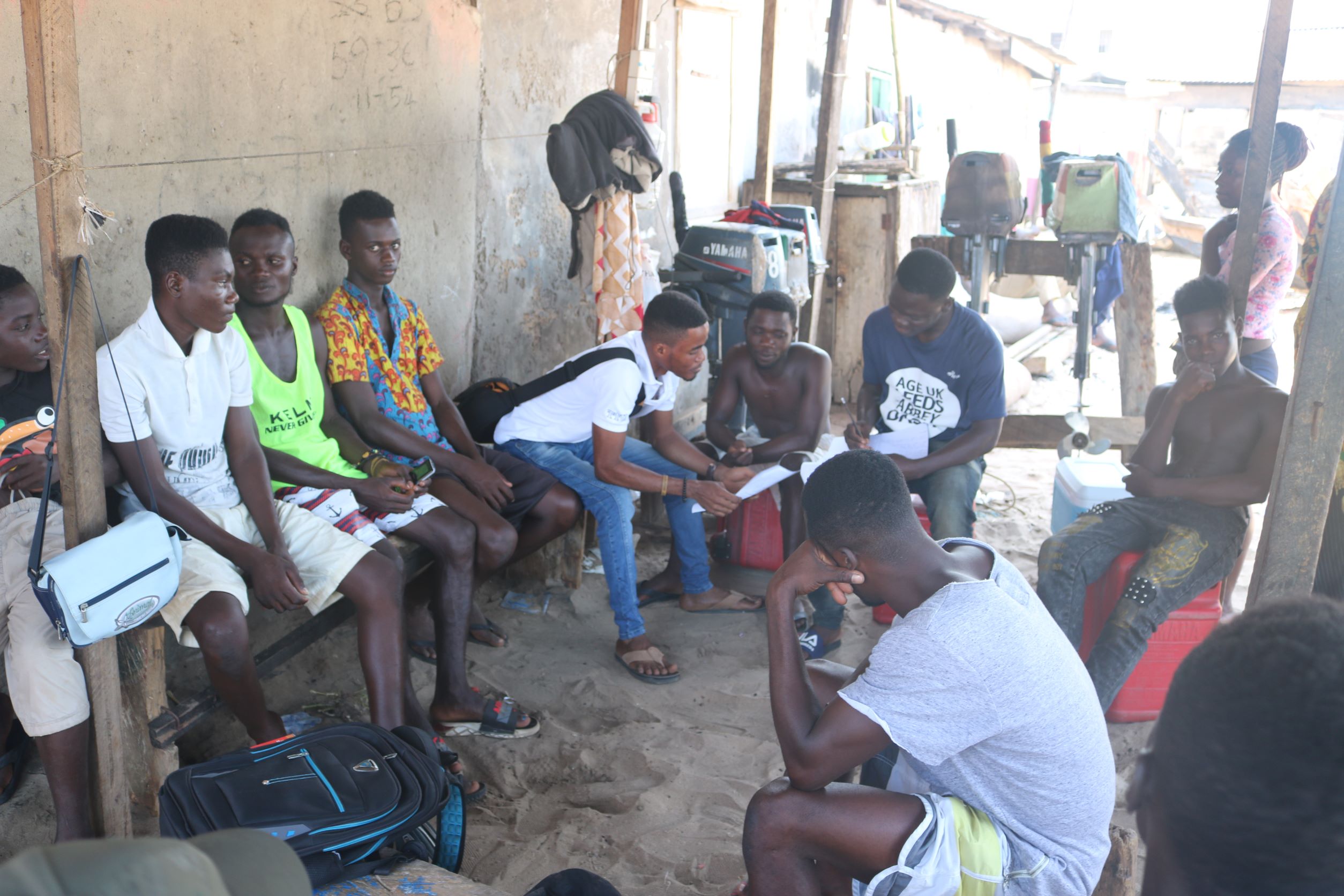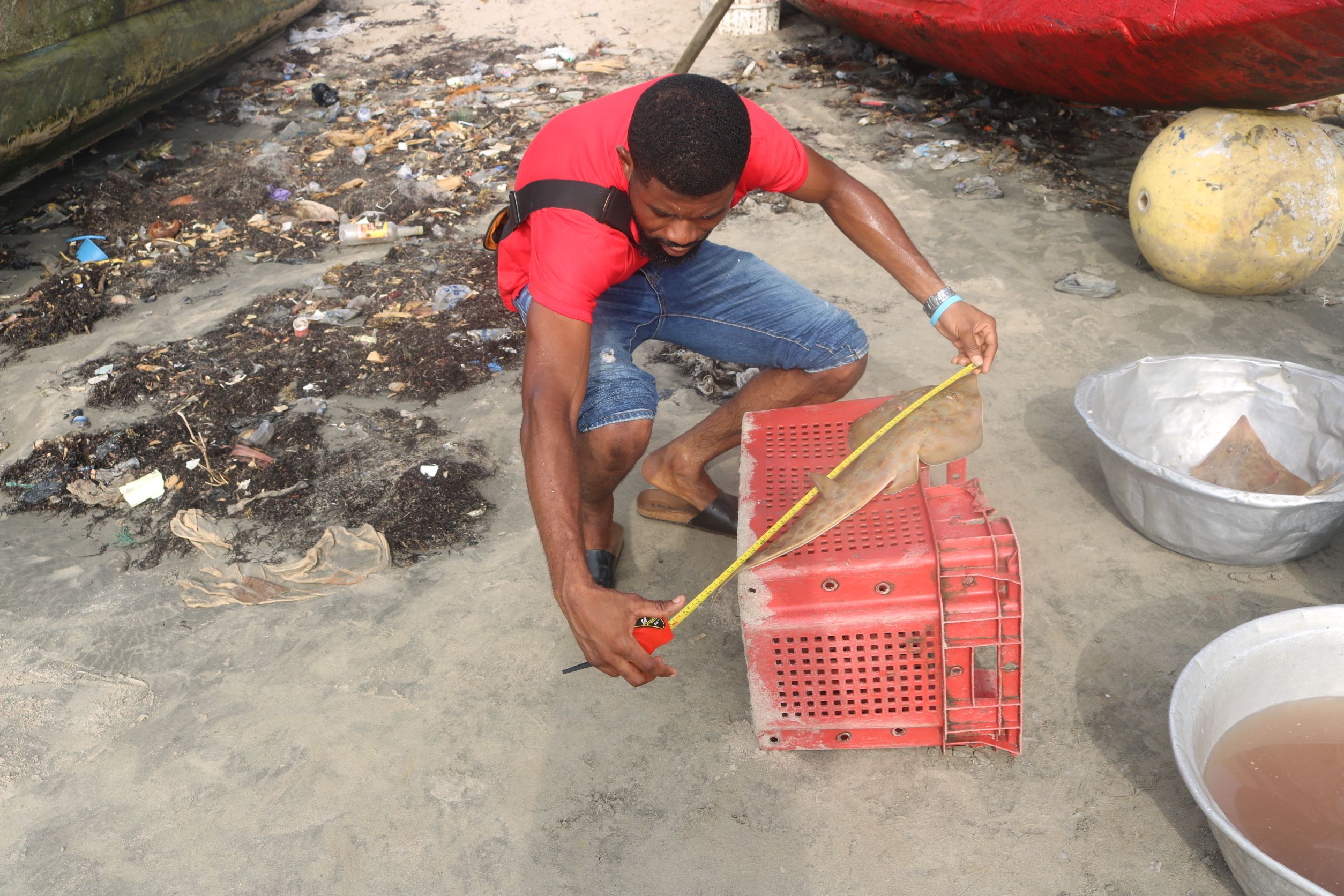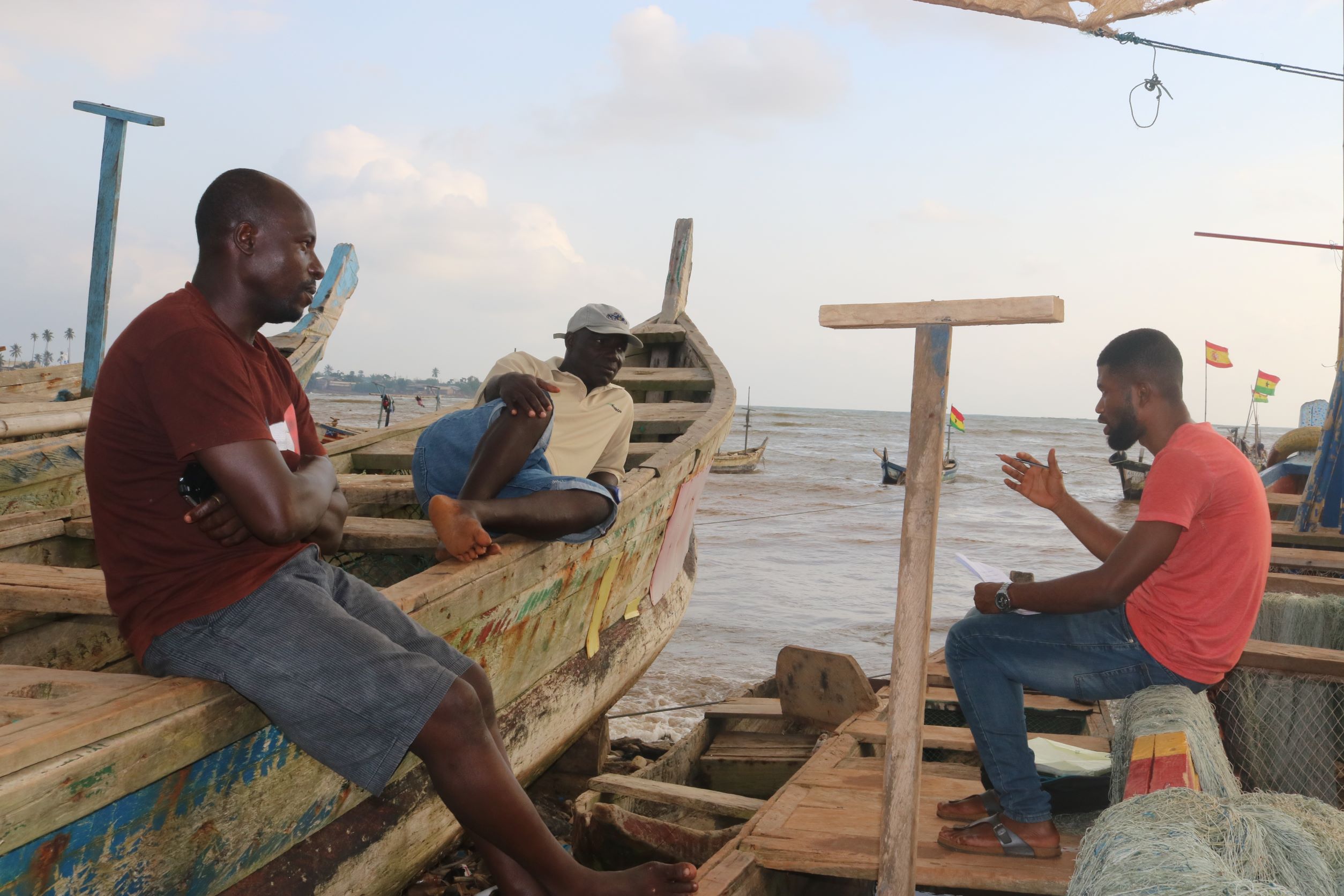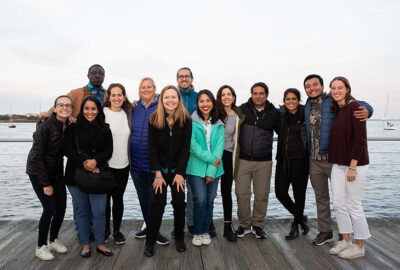Status and Conservation of Sharks and Rays in Ghana with Focus on Threatened Shark-like Rays
By New England Aquarium on Friday, May 13, 2022


By Issah Seidu
Population declines are more severe for some groups of marine species, whose life-history traits make them extremely vulnerable to exploitation. Such is the case for shark-like rays which belong to the order, Rhinopristiformes (Pristidae, sawfishes; Glaucostegidae, giant guitarfishes; Rhinidae, wedgefishes; Rhinobatidae, guitarfishes; and Trygonorrhinidae, banjo rays). Shark-like rays are characterized by a life history of slow growth, late maturity, and low fecundity (also known as fertility) making them vulnerable to overfishing. Shark-like rays are increasingly targeted or retained in many fisheries and, thus, have become an important component in landings across the world. Their meat is mostly consumed locally, while their white fins are sold as lucrative elasmobranch products. They are generally susceptible to capture in different fishing gear, which includes gillnets, longlines, and demersal trawls. The high demand for their meat, their susceptibility to being caught, and intense fishing pressure are key drivers of population declines of these species globally.

The global conservation strategy released by the International Union for Conservation of Nature (IUCN) has resulted in significant progress in raising global awareness and implementing management plans on the plight of sawfishes. However, a conservation strategy is yet to be devised for the wedgefishes and guitarfishes, but, a call for urgent action has been reported. Across West Africa, as seen in Ghana, shark-like rays still remain an important component in fishermen catch, though their presence, status, and trade characteristics are poorly documented. Unfortunately, this hinders any attempt to develop any sort of management strategy to mitigate the threats they are facing. Furthermore, local expertise dedicated to studying sharks and rays in Ghana are still lacking. Local capacity is largely needed to educate and create awareness on the conservation needs of shark-like rays and other sympatric sharks and rays of global conservation concern.

Taking all of these aspects into consideration, researchers from the AquaLife Conservancy with the support from the Marine Conservation Action Fund (MCAF) initiated a monitoring program to assess species-specific presence, biology, and trade and socio-economic drivers of shark-like ray fisheries in Ghana. By exploring landing or market sites, and interviewing key actors targeting and trading these species, the researchers aimed to collect holistic baseline data to inform management decisions on shark-like rays in Ghana. During the project, the researchers recorded the catch frequency, size, sex, and maturity composition of four shark-like rays: spineback guitarfish, whitespotted guitarfish, blackchin guitarfish, and common guitarfish, all listed as Evolutionary Distinct and Critically Endangered species. The spineback guitarfish was the most common species that landed.

The main drivers for the catch and retention of guitarfish are for the trade of fins and as sources of food for consumption. Fishers identified two types of guitarfish where the spineback and whitespotted guitarfish were grouped as “small” guitarfish, while blackchin and common guitarfish were identified as congener species (same genus or similar species) grouped as “large” guitarfish. Fishers’ ecological knowledge indicates the likely disappearance of sawfishes (Pristis spp) in fisher catch for several decades to come, as well as an absence of sightings of the African wedgefish. This calls for urgent conservation initiatives to safeguard the remnant species of guitarfishes in Ghana. By interacting and working together with national authorities such as Fisheries Commission, chief fishers and elders, local communities, traders, canoe owners, and researchers from AquaLife Conservancy, we can educate and create awareness for the conservation needs of shark-like rays, and garner their support of conservation strategies for these remnant guitarfish species. In order to continue gathering short- and long-term data on the species, two university students and nine local volunteers were equipped with shark and ray identification and monitoring protocol through a week-long capacity-building program. These local volunteers were (and still are) incentivized to collect regular data and further interact with fishers to continue spearheading conservation efforts in their various communities. With the support from local communities, key actors in the fisheries, and local volunteers, we hope that our project can create significant impacts on the population of these endangered species, as well as the well-being of fishers and traders who depend on the species for their livelihoods.





